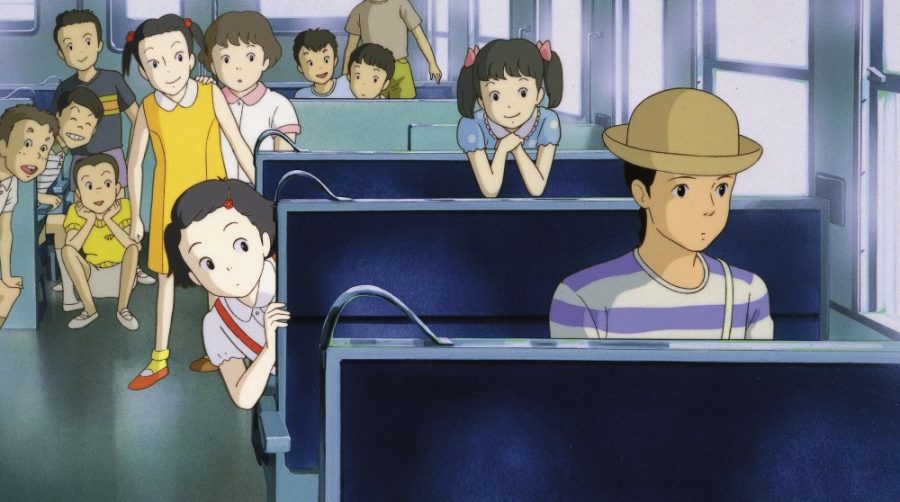With “Only Yesterday” revolving around reflections on the past, it almost seems too perfect that the 1991 animated film from Studio Ghibli (“Spirited Away,” “My Neighbor Totoro”) should never see a release in the U.S. until now, 25 years later. In its native Japanese, its title, “Omohide Poro Poro,” roughly translates to “memories trickle down.” Watching this movie felt as if I was watching a memory trickle down from a time gone by.
It’s 1982 and Taeko (Miki Imai) is a 27-year-old woman living and working in Tokyo. She’s single—“You’re not getting any younger,” her sister portends over the phone—and doesn’t care for her job. To break up the staid rhythm of her stasis, she decides to take a brief holiday to the countryside to help her brother-in-law’s family harvest the safflowers, the petals of which are the main ingredient in blush.
It is during her preparations for the trip that she first recalls her youth, immersing the audience in a flashback to when Taeko was a 10-year-old girl in the mid-1960s. These recollections of her past are prompted by cues in the present and form one half of the story.
For example, as Taeko packs for her trip, she can’t help but relive when she was a frustrated girl whose classmates all got to go somewhere special during school breaks, while she was stuck at home.
Like most young people, school holds dominion over a large part of Taeko’s memories. As young girls who are brushing up against adolescence, Taeko and her friends are just starting to learn about themselves. Of course, they must do this exploration in the company of immature boys, who see a period as something you can catch, like a cold. The girls handle it in various ways but, for Taeko, embarrassment is the reigning emotion.
The vistas of her memory are drawn expressionistically. The schoolyard, hallways and classrooms, at times, are comprised of huge swaths of white, a void in detail like a true, fuzzy memory.
Vivid images do pop out from the blank spaces, though. When adult Taeko passes a fruit stand, she remembers when her family had fresh pineapple for the first time.
While the rest of her family was disappointed in the fruit— which would have been a delicacy at the time—young Taeko cherished it. The golden pineapple of her memory glistened in succulent close-up, reminiscent of the enchanted food that Chihiro’s parents gorged themselves on in “Spirited Away.”
What “Only Yesterday” accomplishes so uniquely and so evocatively is how it shows the past lives right next door to the present and can be conjured up instantly.
With the past being so nearby, Taeko must reconcile with it if she is to move forward with her life. She has no trouble accepting some aspects, like when she laughs off that her strict father smacked her across the face for not wearing shoes outside of the house.
Yet other memories, she grapples with. She can’t for the life of her understand why a boy in her class wouldn’t shake her hand. This seemingly random, average occurrence is unknowable and opaque to her.
It is only with the outside perspective of Toshio (Toshiro Yanagiba), a relative of her brother-in-law who works the safflower fields and also the man with whom Taeko falls in love, that she is able to come to terms with her past. Toshio quickly identifies the boy’s transgression as that of a lonely child seeking to assert himself and that’s it. There’s nothing more to the story.
The film ends, appropriately and sweetly, with love though it may seem slightly rote. Instead of putting off until tomorrow what can be done today, Taeko throws caution to the wind and embraces what’s right in front of her. In the bittersweet, surreal final moments of the film, Taeko runs back to her lover while her younger self, and the rest of the school children of the past, cheer her on.
Though it has the beautiful animation we’ve come to expect, “Only Yesterday” is more adult fare than Studio Ghibli usually offers, allowing the film to have the depth of character and emotion that is rarely seen in animated features.
Follow Alex Guyton on Twitter.









